In support of the constitutional guiding principle of transparency, it is important for the constitution-making body (CMB) to proactively and systematically impart and exchange information and news about the constitution-making process with stakeholders, the public and the media. To this end, a CMB secretariat will usually have a Communication Department, and that department will first need to develop a communication strategy to guide all communications by and from the CMB. A communication strategy is a tool utilized by the CMB and secretariat describing how these bodies will utilize the media and other means to impart and exchange information and news about the constitution making process with the general public.
Primer
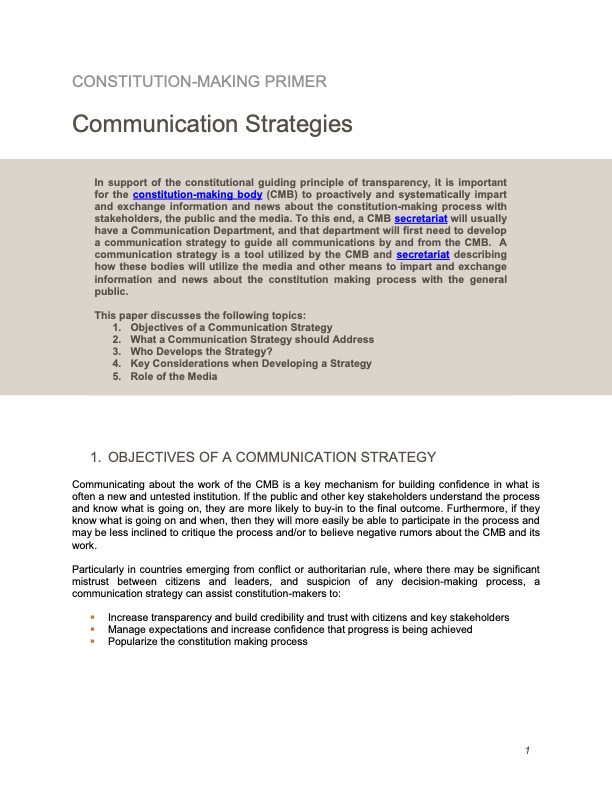
Sample Materials: Communication Strategies
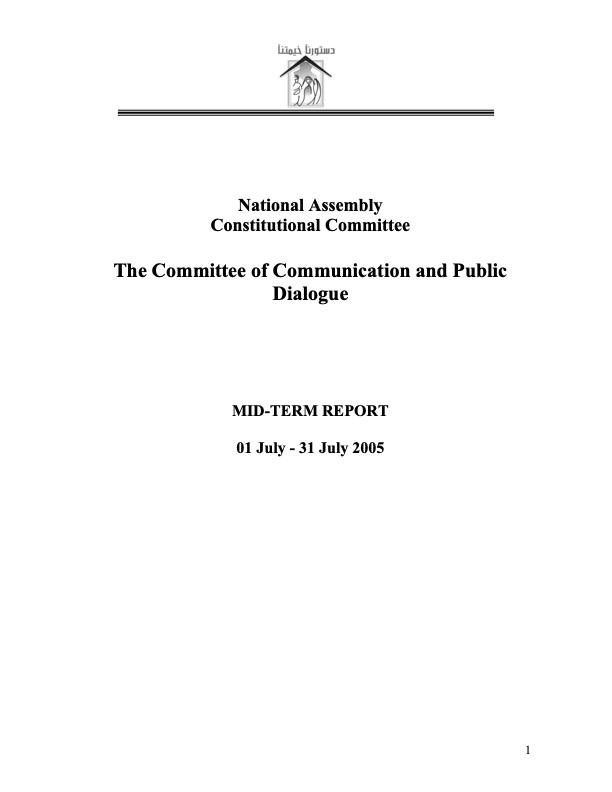
This is the progress report of the Iraqi Committee of Communication and Public Dialogue (CCPD) for the month of July 2005. The report provides background information on the CCPD, as well an overview of its structure, tasks, staffing arrangement, partnerships and key activities.
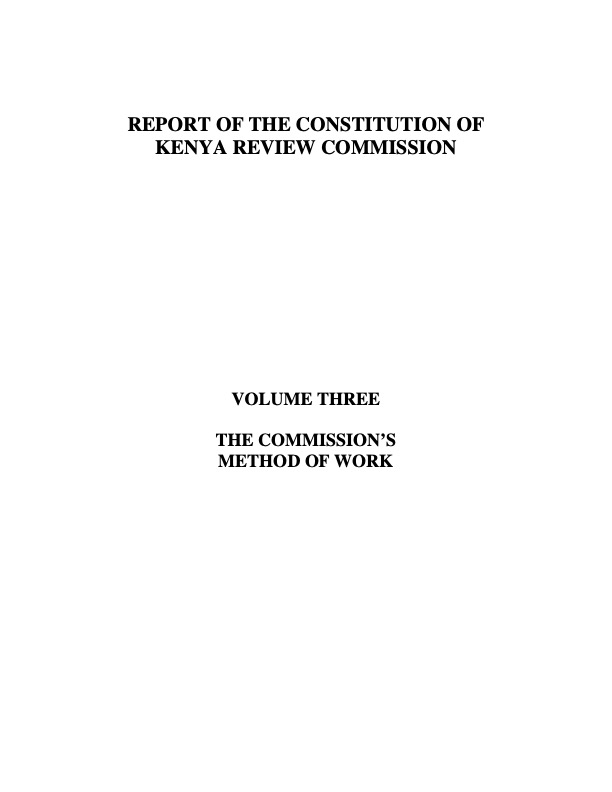
This report of the CKRC comprehensively discusses the Commission's mandate, structure and activities as part of the post-2000 constitution-making process. The report is structured around the CKRC's activities before, during and after the 2003-2004 National Constitution Conference (NCC).
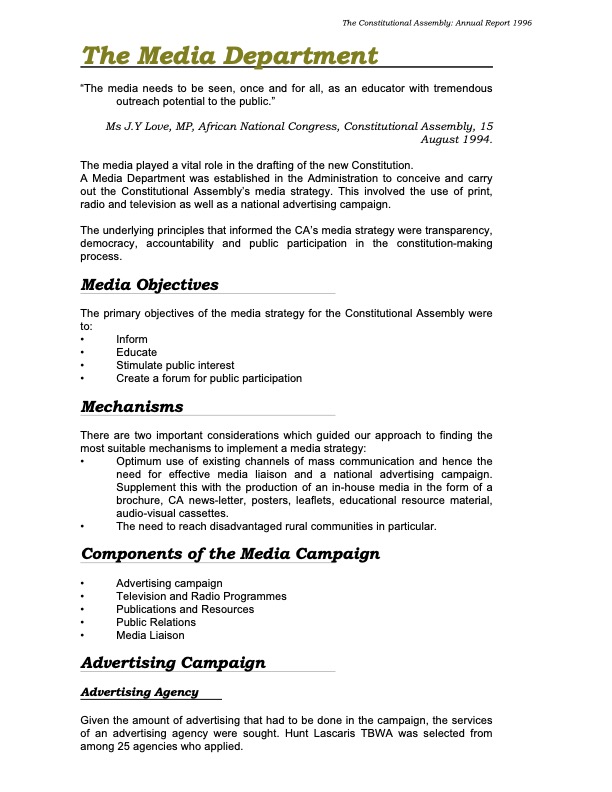
This excerpt from the South African Constitutional Assembly's Second Annual Report discusses the components of the media campaign, including the advertising campaign and television and radio programmes. Keywords: Communication, Media, Media Strategy, Example.
Sample Materials: Communication Outreach
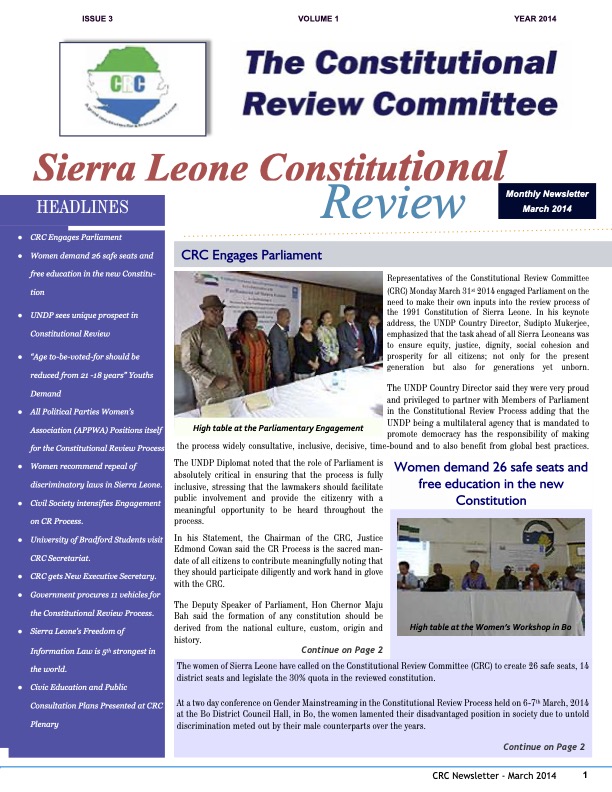
These are the January and March 2014 newsletters of the Constitutional Review Committee in Sierra Leone. They each provide information on the Committee's structure and composition, highlight the work of the Committee, and discuss the importance of public participation in the constitution-making process.
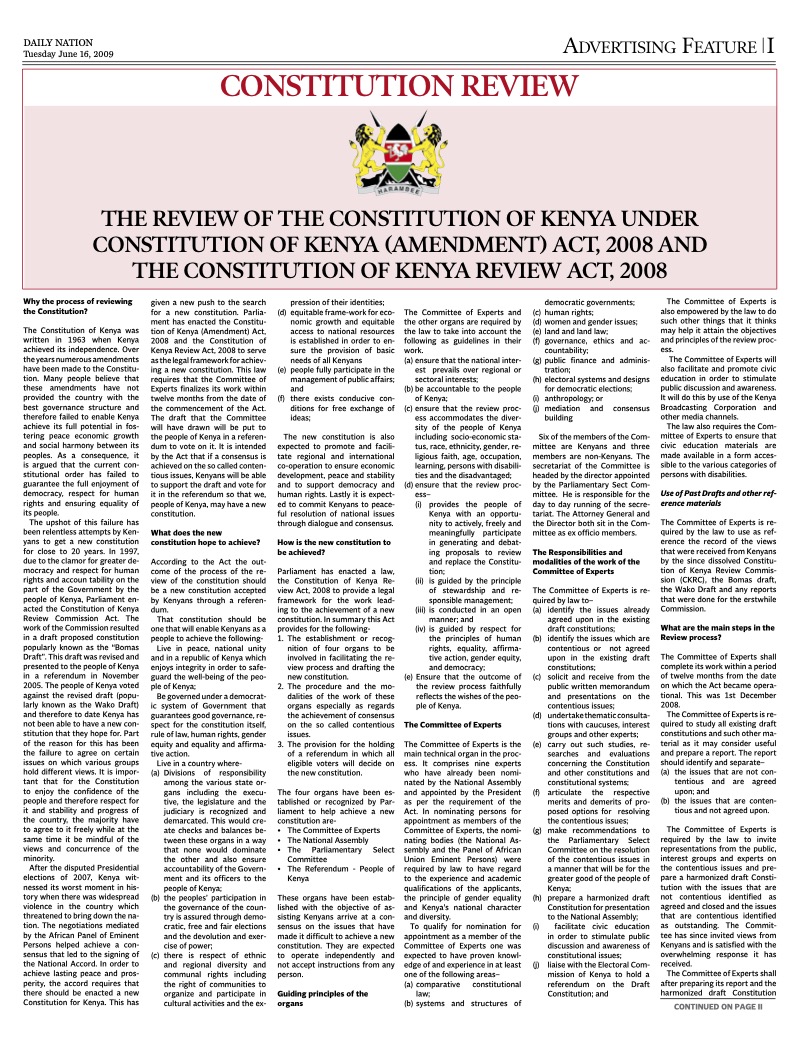
This article is an advertising feature from June 2009 written by the CoE and published in the Daily Nation periodical which describes the post-2008 constitutional review process. The article outlines the legal framework, purposes and sequence of the review and answers a number of frequently asked questions. The article also describes the CoE and its work and provides biographical information on its members.
Further Reading
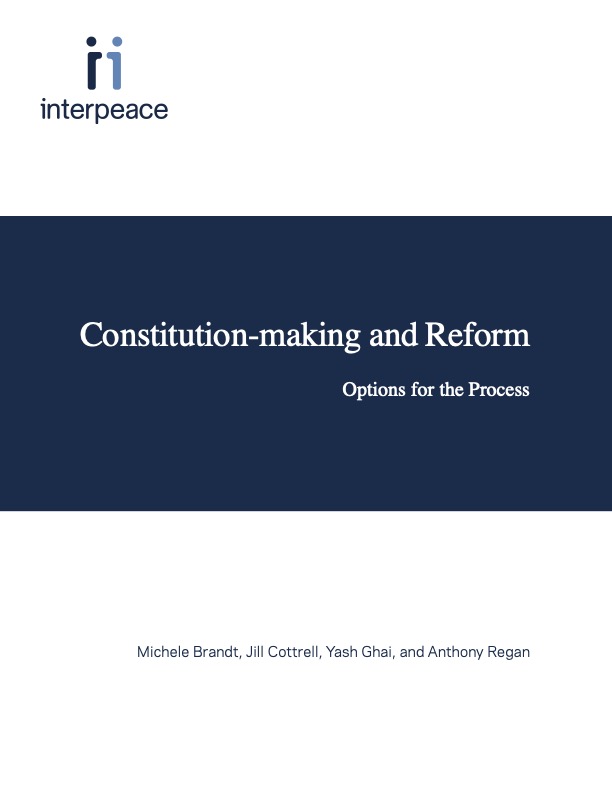
This is a comprehensive guide to constitution-making and reform. The book identifies the tasks that need to be carried out, the procedures that can be used, and who can do them. It is intended for a wide audience and to be a guide for anyone who is engaged in a constitution-making process, or who is interested in improving constitution-making practice. It includes a discussion on the following topics: Emerging guiding principles, Impacts of Adherence to Guiding Principles, The Role of a Constitution Issues of Process Key Components and Issues of the Constitution-Making Process Tasks and Responsibilities in Constitution-Making Assessing the Impact of Constitution-Making Who Does What in the Process Starting the Process Public Participation Administering and Managing the Process and its Resources The Agenda of Constitutional Issues and Generating Ideas on the Issues Debating and Deciding the Issues The Constitutional Text: Coherence and Drafting Adopting and Implementing the Constitution Institutions with Multiple Roles Institutions that Develop Proposals about which Final Decisions are Made Elsewhere Administrative Management Bodies Specialist or Technical Input Institutions Referendums and Plebiscites Civil society and the media and Guidance for the International Community.
